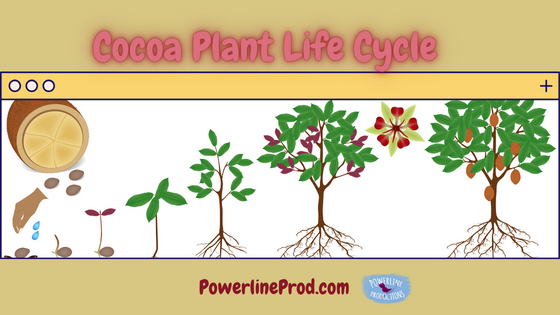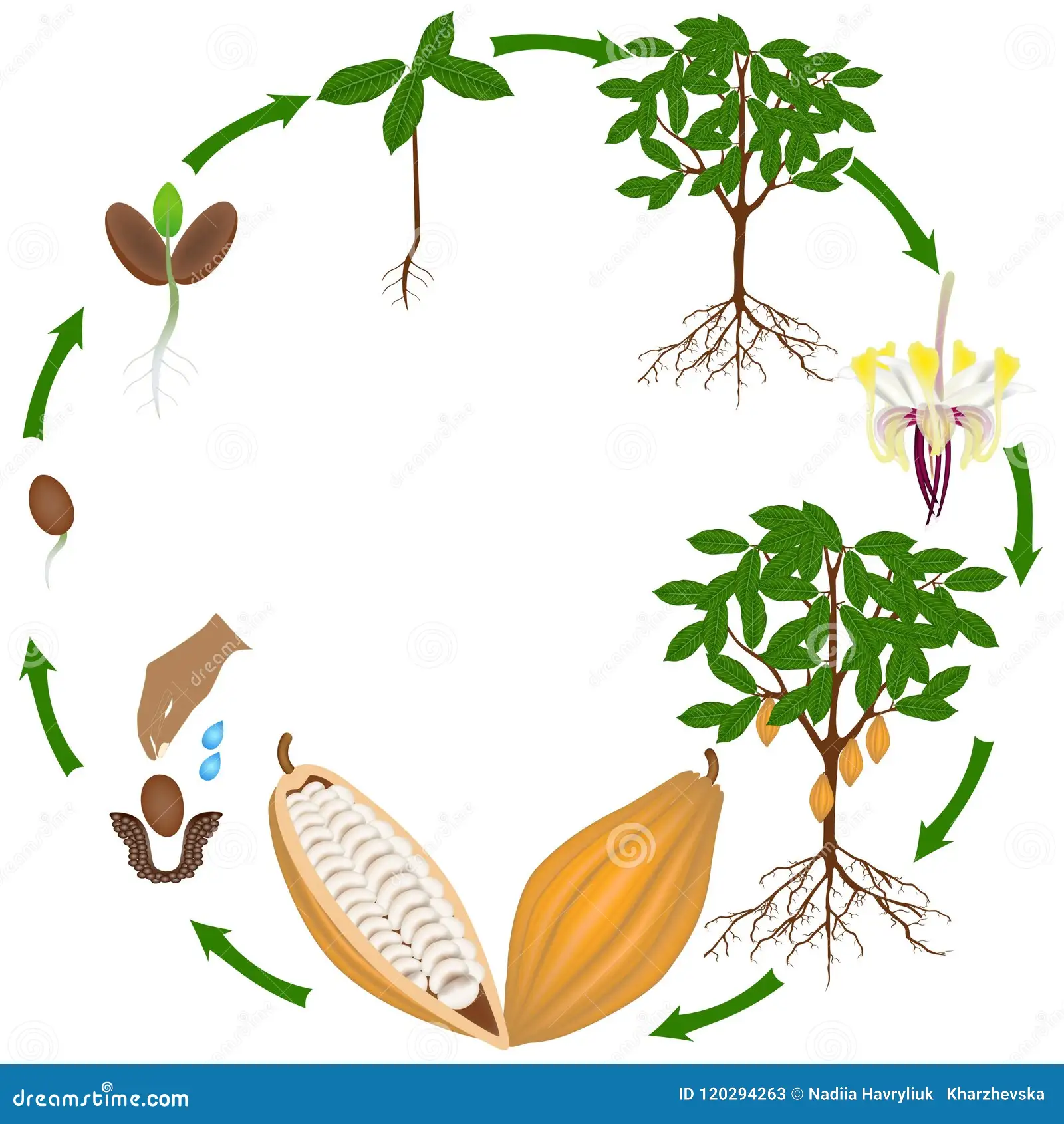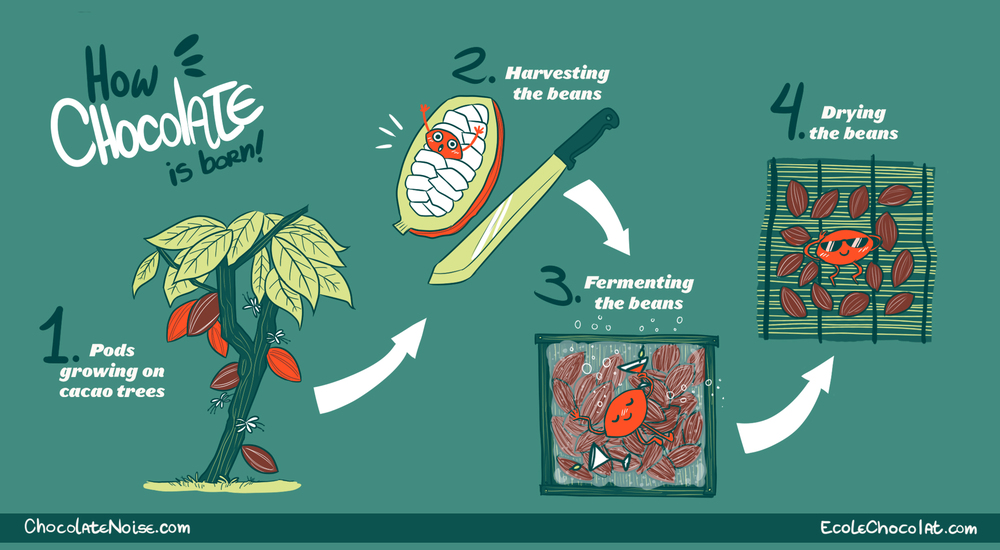What is the Life Cycle of a Cacao Tree?
The life cycle of the cacao tree (Theobroma cacao), which is essential for cocoa production, involves several distinct stages, from seed to mature tree, and significantly influences the quality and quantity of cocoa harvested.
Life Cycle Stages

-
Seed Germination:
- Cacao seeds are non-resting and must be planted soon after harvesting. They require moist and warm conditions to sprout a taproot. The seeds are typically found inside pods that must remain hydrated until planting.
-
Seedling Stage:
- After germination, seedlings grow best in partial shade provided by taller trees, which protect them from excessive sunlight and wind. This stage lasts for about 3 to 5 years before the tree starts to bear fruit.
-
Flowering:
- Cacao trees begin to produce flowers around the age of 5 years. The flowers, which can be white, pink, or yellow, grow directly from the trunk and branches. Pollination, primarily by small insects called midges, is crucial; without it, the flowers will die within 24 hours.
-
Fruit Development:
- After successful pollination, the flowers develop into cacao pods, which take about 5 to 7 months to mature. Each pod can contain 20 to 60 seeds (cacao beans) surrounded by a sweet, edible pulp. The pods change color from green to yellow, orange, or red as they ripen.
-
Harvesting:
- Pods are harvested by hand, typically during two main harvest seasons: one in the rainy season (May-July) and another in the dry season (October-March). This process requires careful timing, as not all pods ripen simultaneously.
-
Post-Harvest Processing:
- After harvesting, the beans are extracted from the pods and undergo fermentation, which is critical for developing the flavor of the cocoa. This process can last from 2 to 9 days, followed by drying to reduce moisture content.
-
Mature Tree:
- Cacao trees can live for about 100 years, but they typically produce fruit for only about 25 to 30 years at peak productivity. During this time, a healthy tree can yield about 30 pods annually, with each pod containing enough beans to produce several chocolate bars.
Influence on Cocoa Production
The life cycle of the cacao tree directly affects cocoa production in several ways:

-
Yield Variability: The timing of flowering and fruiting stages influences the overall yield. Cacao trees can produce flowers and fruit year-round, but the two main harvests can lead to fluctuations in supply, impacting market prices.
-
Quality of Cocoa: The fermentation process is vital for developing the desirable flavors in cocoa. If the beans are not fermented properly, the resulting chocolate can taste flat and undesirable. This step is crucial for maintaining quality in cocoa production.
-
Sustainability: Cacao trees thrive in specific tropical climates, requiring careful environmental management. Sustainable practices, such as growing cacao under the canopy of other trees, help maintain biodiversity and protect against pests, which is essential for long-term cocoa production.
In summary, the life cycle of the cacao tree is a complex process that significantly influences the quantity and quality of cocoa produced, highlighting the importance of careful cultivation and harvesting practices in the chocolate industry.

Citations:
Botany and Cultivation of Cocoa
comments powered by Disqus